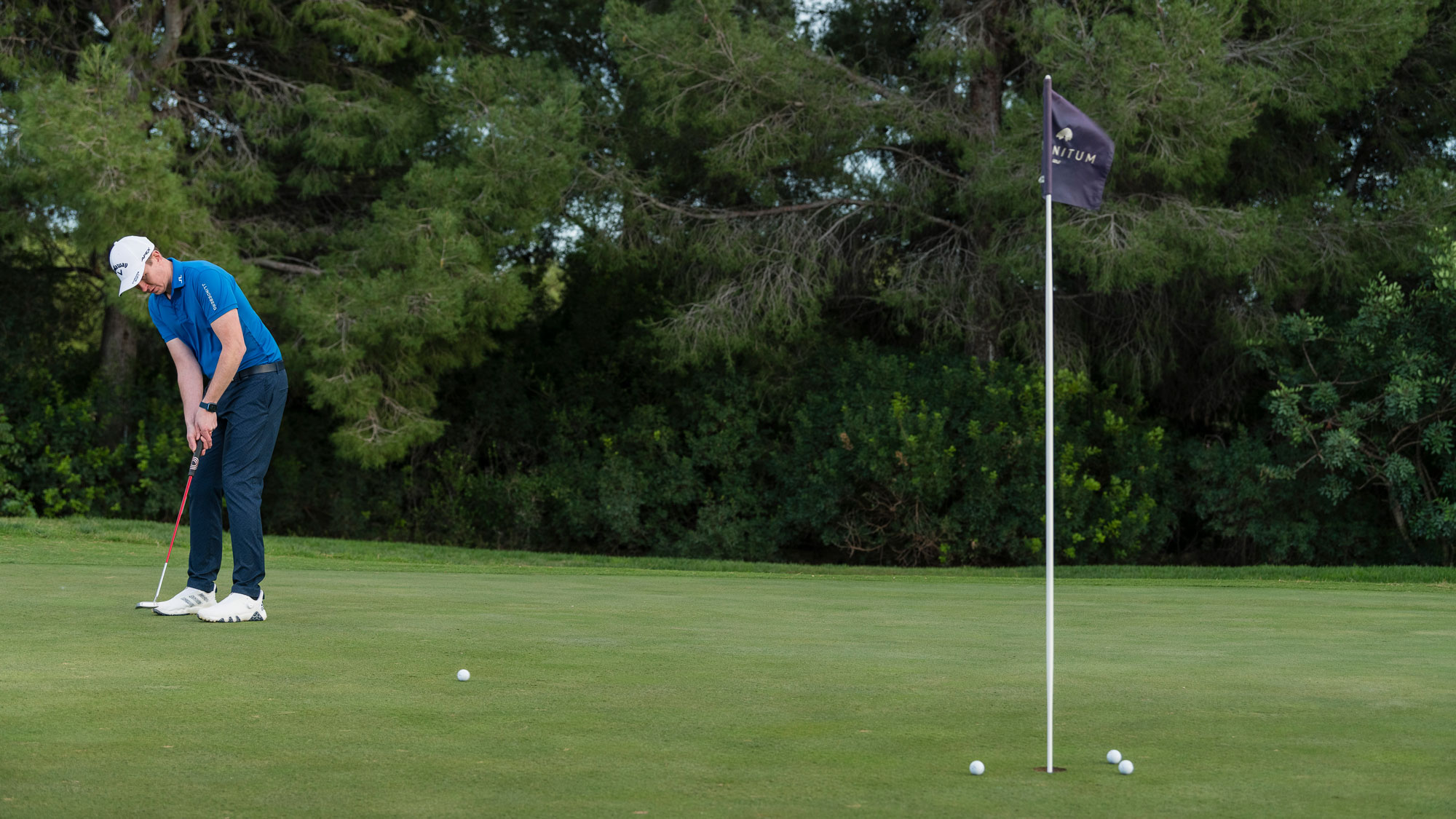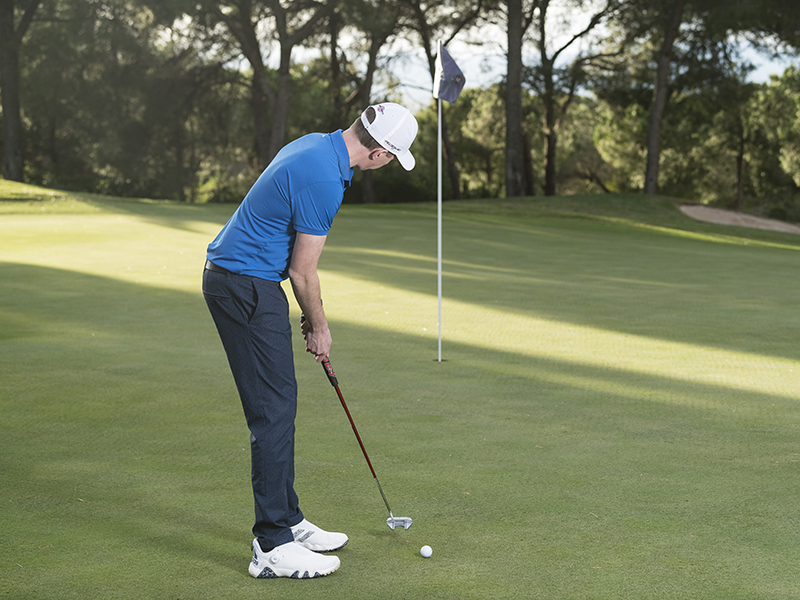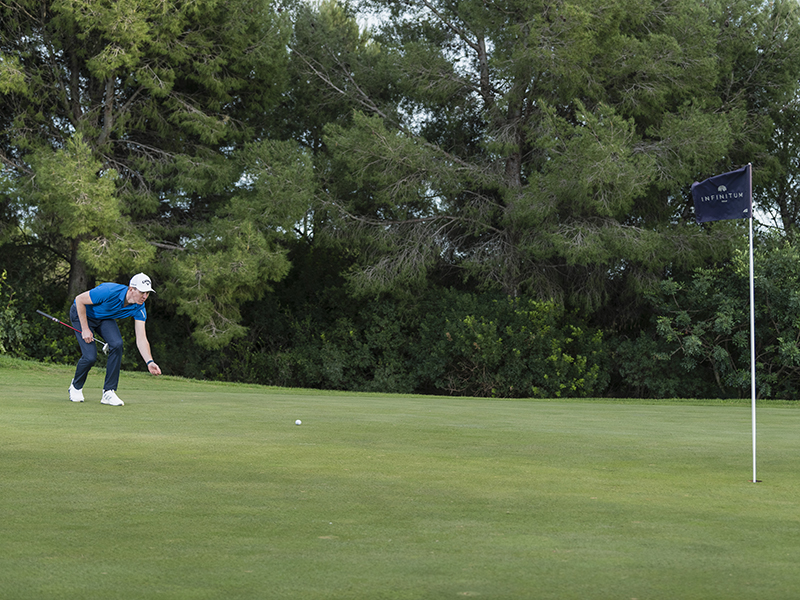How To Putt On Fast Greens: Expert Tips From A Top PGA Pro
Learning how to putt on fast greens can remove the fear that many golfers feel, improving their ability to hole out more effectively and avoid costly 3-putts...


Learning how to putt on fast greens will not only save you shots when you encounter slick surfaces, but it will also help you to deepen your understanding of speed when putting.
Distance control is king on the greens, so setting aside time to practice putting drills is paramount. You don't even need to traipse over to the local golf club to put in the work either, as the best putting mats and putting aids now provide the perfect opportunity to take your practice home.
In order to improve your feel on fast greens, we asked Golf Monthly Top 50 Coach Ben Emerson to share his expert putting tips for those lightning quick surfaces...
How To Putt On Fast Greens
When faced with a putt on fast greens, most amateurs tend to become very hesitant. This could be born out of fear or bad experiences on similar putts in the past, but this uncertainty can significantly harm your chances of hitting a successful putt.
Often, in this scenario, golfers don't adjust their normal putting stroke to account for the increase in speed and as a result will often decelerate through impact. The worry during the swing that you might knock the putt miles past causes an inconsistent stroke, and that lack of positivity is not good for distance control when putting.

Being confident and positive over putts on fast greens is vital, as a nervous and inconsistent strike is never the solution...
Instead, what I prefer to see is a stroke that keeps the same follow through length, but with a slightly shorter backswing. This shouldn't to be a 'stabby' action, and should still revolve around a 'one-two-tempo', but ultimately you want to give the ball the best chance of going in.
One way to practice this is with the tee peg drill. Most amateur golfers would seriously benefit from taking the hole out of the equation when practicing their putting, and this is a great way to do it.
Subscribe to the Golf Monthly newsletter to stay up to date with all the latest tour news, equipment news, reviews, head-to-heads and buyer’s guides from our team of experienced experts.
Stick a tee peg in the ground and give yourself three putts from around 10- to 15ft away. Try to hone that positive stroke, and leave each ball within a few feet of the target tee peg. What you will probably notice is the first is the least accurate, the second might be just short and the third is pretty much there.
Trying to visualise the putt will help, as our brain does a lot of the calculations for speed subconsciously. Imagine you are rolling the ball to the hole, how far would you need to swing your arm back and through to get it there?

Imagine you are rolling the ball to the hole, as Ben Emerson demonstrates in the image, how far would you need your arm to swing back and through for the ball to reach the hole?
Getting a feel for the speed of the greens prior to going out on the course is crucial, and the drill above will certainly help you to do that, but you won't get three goes at the same putt during the real thing.
After completing the initial drill, take just one golf ball and aim to complete 6 (different) holes of the putting green – finishing each putt and counting up your score. Imagining that 12 is the par total for six putts, record your score and try to use the 'feels' you developed in the first drill to post as best a score as you can.
This competitive aspect will certainly help to prepare you for the greens out on the course, and could also be a great way to have a bit of fun with your mates to loosen up prior to a big competition tee time.

Location: Sand Martins GC
Ben’s modern approach to golf coaching has seen him become one of the most sought-after coaches in the country and teaches none other than Robbie Williams. His honest, modern and fun style of coaching has help thousands of golfers of all ages and abilities and he has been coaching for over 20 years.
Advice for practice:
Start with slow, small swings. If you can’t do it small and slowly there is not a hope in hell of doing it at full speed with a full swing! In other sports such as rugby or martial arts they slow learn new moves/plays before making them at full speed.
Teaching philosophy:
‘Why guess when you can access’ Ever new student goes through a full TPI movement screen, 3D motion capture and pressure plate analysis as well as TrackMan and 2D video analysis. Coaching is based on facts and not guess work.
Most common problem:
A lack of clubface understanding and awareness. I get golfers to aim the clubface directly at the target and get them to make a slow swings and deliver the club to the ball with an open face, then repeat the same thing again but with a closed face, followed by one at the target. Giving them full awareness based on feelings errors to find a happy middle ground.